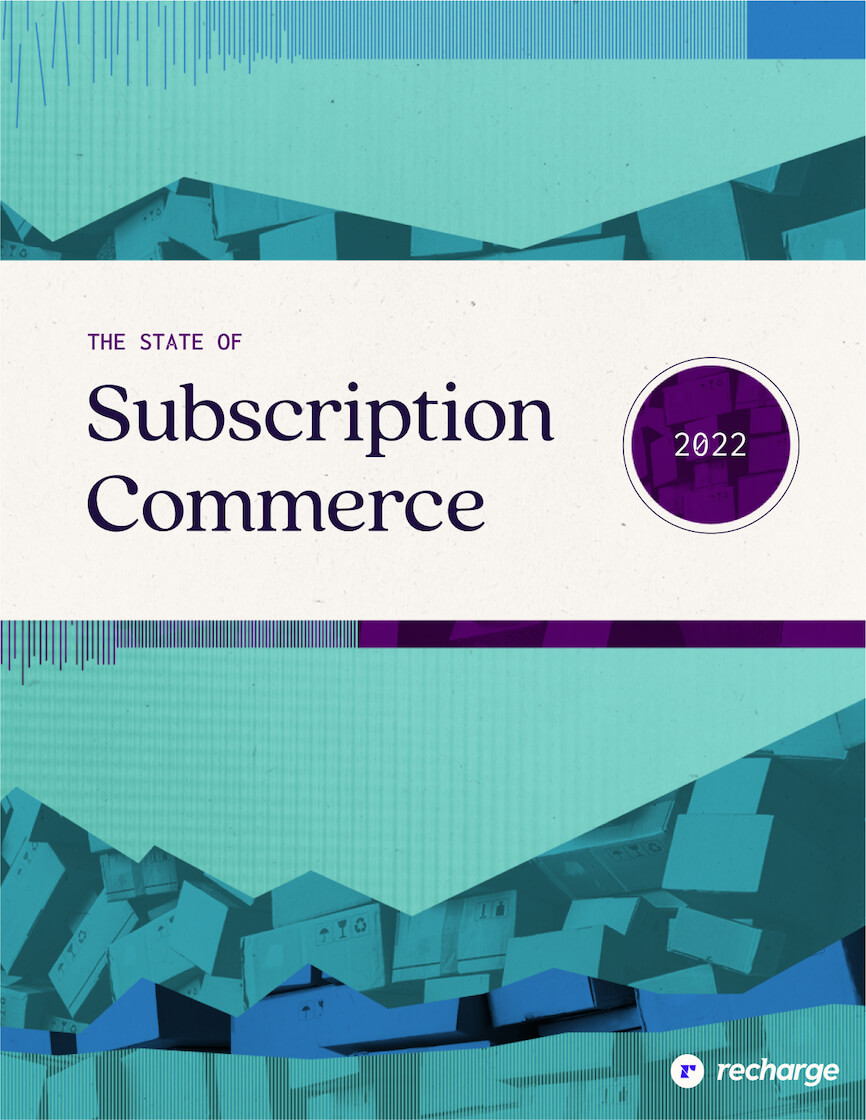The State of Subscription Commerce 2022
What can the subscription ecommerce industry learn from 2020? We break down how top brands pivoted to meet their customers’ changing needs.

From 2020’s droves of new subscribers, a group of particularly valuable customers emerged in 2021.
In 2020, new subscribers flocked to the subscription market at unprecedented rates, leading to dramatic year-over-year growth across verticals. In 2021, subscriptions became more than something new to try—they became a reliable part of consumers’ daily lives.
Humans crave experiences that repeat—especially in uncertain times.
Over the past year, both merchants and consumers have found immense stability in subscriptions. While new challenges continued to emerge in the ecommerce market in 2021, merchants of all sizes and verticals saw their subscribers spend more and stay on longer, increasing average order value, customer lifetime value, and monthly recurring revenue.
The merchants with the highest GMV used SMS, email marketing, and sales & conversion integrations at vastly higher rates.
We found that the higher a merchant’s gross merchandise value was, the more integrations they tended to use. What’s more, the types of integrations they chose typically allowed them to personalize the customer experience to fit the needs and preferences of their unique subscriber base.
Larger merchants saw the greatest usage of one-time purchase options.
Flexible purchase options—particularly one-time purchase options—once again proved to be invaluable in 2021. We found that the higher a merchant’s GMV was, the higher their subscribers’ usage of one-time purchases tended to be.

“A subscription encourages you to think in terms of nurturing long-term relationships. Like human relationships, when you prioritize a deeper sense of care and empathy in the ways you act, stability follows naturally.”
—Stephen Tracy, Founder of Keap Candles
Here's a glimpse into what you'll find:
Frequently asked questions
What is subscription commerce?
Subscription commerce is a business model where goods and services are bought and sold on a recurring basis. Subscription offerings can include everything from curated boxes of products around a certain theme to frequently-used consumables to digital memberships and products (such as software-as-a-service). In this report, we focus on physical subscriptions, meaning customers receive something tangible for their purchase.
What merchant groups does the report cover?
In Section 1, we analyze the performance of merchants in seven key verticals: Food & Beverage, Health & Wellness, Beauty & Personal Care, Fashion & Apparel, Home Goods, Pets & Animals, and Other (made up of a variety of items, like curated boxes of hobby items). We also study the performance of merchants who are new to subscriptions versus those who are experienced with subscriptions. In Section 2, we organize merchants into five different cohorts according to their annual gross merchandise volume.
How can my subscription business use this report?
Use this report to gain a baseline for your business—both within your product vertical and your annual gross merchandise value range. Compare your performance to your competitors’, and gain key takeaways on how to strategically scale your business in today’s ecommerce market.
You might also like...

How to reach your next subscriber milestone
Katrina Nguyen August 1, 2024 Aug 1, 2024

First-party data vs. zero-party data for customer retention: Definitions & examples
Erin Chesterton July 26, 2024 Jul 26, 2024